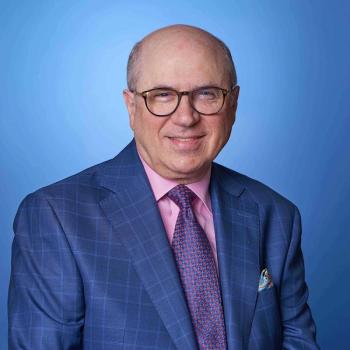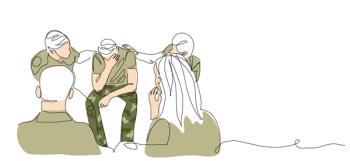
Social Determinants of Health and Mental Health: Concepts and Practice of Growing Relevance
Explore the critical role of social determinants in mental health, highlighting their impact on wellbeing and the need for interdisciplinary research.
The world psychiatric literature of our times reflects, in undeniable terms, the growing clinical and heuristic value of the social determinants of health and mental health, also recognized by the main health institutions around the globe. This is the first of a 2-part interview that Renato D. Alarcón, MD, MPH, member of Psychiatric Times Editorial Board, recently had with Dilip Jeste, MD, former Professor of Psychiatry and distinguished researcher at the University of California in San Diego, former president of the American Psychiatric Association and, currently, director of the Global Research Network on Social Determinants of Mental Health and Exposomics, president elect of the World Federation for Psychotherapy, editor-in-chief of the International Psychogeriatrics journal and undisputed leader of the field known as positive psychiatry.
RDA: Let me start this conversation, Dilip, by asking how did your interest in the social determinants of health and mental health evolve?
DJ: I started out my career in psychiatry several decades ago, as a biological researcher interested in schizophrenia. Later, as a geriatric psychiatrist, I got interested in the positive side of aging and the related concepts of positive psychiatry, still focused, however, on biological factors. Increasingly, I became aware of the importance of psychological and social factors and, what happened about 4 years ago, was the then-president of the American Psychiatric Association (APA), Dr Vivian Pender from Cornell, decided to have the social determinants of mental health as the central topic of her presidential term; she appointed a Task Force, and asked me to chair it. It was really a great opportunity to study more deeply the field and learn more systematically about it. An interesting development was that The Lancet, one of the world’s most prestigious medical journals published an editorial complimenting Dr Pender and the APA for making social determinants of mental health a prominent area of study and institutional actions. I really was very impressed and honored by this task. The history of the social factors in health and illness has been known since times immemorial, but medicine as a professional practice really did not pay much attention to them. In 1998, the World Health Organization (WHO) published the first major report on social determinants of health, followed by additional documents in 2002, 2008, and subsequent years. The first report on social determinants of mental health came out in 2014, inspired by Shekhar Saxena, high officer at WHO then, and now a faculty member at Harvard.
Reading about the enormous relevance of social factors in mental health really took me over. Social factors have indeed a greater impact on our health than the traditional medical risk factors that we usually ask patients about. A variety of different social factors have been described in recent medical literature, but there is not much in psychiatry compared to, say, oncology and cardiology—fields in which much more has been done. In any case, as the Task Force began its work, I became more impressed and convinced that this objective was very important, that much more research needs to be done, and much more solid evidence requires public diffusion. Advances are still quite limited, though. Dr Pender and I published a first commentary, a Viewpoint article on Social Determinants of Mental Health, in JAMA Psychiatry. As planned, the task force’s work ended when Dr Pender’s presidency ended, but I really got more and more interested and determined to deepen studies on the topic. Around the same time, I also retired from UCSD, which gave me time to think and decide to form a nonprofit organization called Social Determinants of Health Network. The idea was to constitute a global research network of scientists, people working in various and different areas, not just psychiatrists or psychologists, but also social workers, nurses, biological researchers (including those in fields like genetics, microbiomics and so on), bringing them all together for a better understanding of what social determinants of health, especially mental health, are. I have been doing this now for the last 4 years, and am proud to have a very strong, growing network. I am the president and director, and we have Chip Reynolds as the Secretary General, and Eric Rafla-Yuan as treasurer for the organization.
RDA: It is indeed an exemplary task focused on the impact of the social dimensions of mental life and the impact of these factors on the etiology and pathogenesis of what we call mental disorders. The name of the organization encompasses a global research network on social determinants of mental health, but then you also add the term exposomics. Could you explain that concept, please?
DJ: We all know that the human genome was coded in 2003 by the then-director of the National Institute of Mental Health, Dr. Francis Collins, Craig Venter and a number of collaborators. It really was very exciting to think that, by handling the human genome, we soon could cure all illnesses because “gene abnormalities cause the diseases.” Well, we know now that this is not the case. People began to realize that genomics is not the whole story, that it is definitely affected by environmental factors which, therefore, must also be actively evaluated. Christopher Wild, PhD, the oncology researcher that first published on this matter in 2005, called it Exposomics. It is really a science just like various others such as genomics, metabolomics, and so on. Exposomics is an important scientific concept—a field of science that studies how the environmental factors affect our health, partly through its impact on genes, but also through several other factors. That is how exposomics started. As I said, at this point, there is quite a bit of research on exposomics in oncology and cardiology, but other medical fields like psychiatry have not been closely involved. Exposomics and social determinants of health go hand in hand: we are talking about social factors that affect health in various ways, including both biological and psycho-emotional, so we must study them together, right? But it had not happened, and that is why I thought it was important to bring both in. So, when we talk about interdisciplinary studies of social determinants of health, it is not just psychiatry, neurology, or oncology, it is also biology and genomics, as well as environmental factors, public health, etc. That is also why I thought we needed to have a network that could focus not only on a descriptive listing of social determinants of health, but also on their exposomics, so we can arrive at a better understanding of their biological roots.
RDA: So, the time has arrived for the integration of concepts that, throughout several points in history were not only quite distant, but also severely contradicted themselves in a kind of useless controversies. This is, indeed, a wonderful effort aimed at the clarification and correction of historical and scientific errors. In that context, several pronouncements of institutions like the World Health Organization have clearly recognized these realities. There was, for instance, one in 2008, that proclaimed the need to close “intergenerational gaps,” by means of a global acknowledgment of the large load of social determinants of mental health, the need of joined efforts to disrupt the inequities of their impact in the distribution of power across different populations, communities, countries or continents, and, in a last analysis, to improve the daily living conditions of the affected communities. Could you briefly discuss the impact, in the last several years, of 3 powerful social determinants that, in the context of globalization phenomena, affect the morale and the psychological life of humanity in general? I am talking about poverty, violence, and corruption.
DJ: This is really an important point to consider: the social determinants are very broad factors that affect individuals and, of course, the whole society. These are significant factors that depend on the social structure, social and governmental policies, and conditions regarding the socio-economic status of the total population. We know how discriminatory behaviors of different kinds, including racism, sexism, and so on, can complicate the social coexistence of communities and populations all over the world, and how conditions like poverty can impact food security, nutrition levels, job opportunities, educational conditions, etc. Similarly, government and social policies can exacerbate more than inhibit violence in society. Another example is climate change as a social factor that affects health. All these are factors that are not under any single individual’s control; they are affecting the whole society, they can go in different directions, different societies may have different policies, and yet they probably affect, through different mechanisms, many people across the world. I would say that half of the social determinants can be considered along those lines—that is, very broad policies and structures that affect large segments of society, things like poverty, homelessness, food security, violence, various forms of discrimination. Lastly, there are also factors at a very individual level. For example, access to internet or means of transportation to clinic facilities. Say I have a patient with schizophrenia, and he does not have access to transportation. He does not know how to go to the clinic because he cannot afford a cab, there are no bus lines nearby. So, what happens? He misses clinical visits, which increases the risks of relapsing or, if he does not have internet or does not know how to use it, then he will not be able to communicate with the healthcare services. That is a very individual level set of circumstances, and we need to do something to assist such person.
Many people know, I am sure, about the Joint Commission, a historical source of health provisions in the United States, formed in the early 1950s. The Commission’s vision divided the social determinants into 2 groups. One is constituted by social, societal, or political justice factors like homelessness, immigration, discrimination, along with individual level factors that the Commission called health-related social needs like transportation, communication access, availability of medication, or affordability of healthy food. The societal level factors certainly affect as well those at the individual level: if you want to change the society level factors, you have to do something at a public health, political, or social level, whereas if you want to correct something like transportation and internet access, you actually have to work primarily with and for individuals, right? Therefore, something to keep in mind when we talk about social determinants is the presence of 2 different groups as the targets. Both are equally important, and they have a great impact. But of course, the way we address them would be different. Does that make sense?
RDA: Yes, definitely, it does. I think it has been called at some point, the multilevel framework, right? The one that kind of provides this multiple structure, these poly-structural aspects to the social determinants. Now, you mentioned particular groups in the communities that are affected by this. I think a general name would be vulnerability, vulnerable groups, vulnerable communities. You mentioned, for instance, racism, the result of the process of racialization, a concept that the APA has introduced lately to explain how many behaviors, attitudes, ways of acting by different groups, can be a result of “race” and “racism”. In more general terms, the term minoritization implies that authorities, administrators, bureaucracy, etc, have proceeded to consider some groups as minorities with a series of negative implications, using codes or names that lead, purposely or not, to discrimination, stigma, etc. What are your comments about such processes?
DJ: I do think that discrimination of different kinds is one of the most important social determinants, and it has been there since the beginning of humanity. Human beings are supposed to be social animals, we have to be social in order to survive. We have close friends, but we also have some enemies. And, what do some people do with those that they dislike, with people who are different, disadvantaged, from a different race, different color, different height, different income? We know that we should feel compassion and empathy for them, but unfortunately, what happens is that to an extent larger than we can imagine, there is anger, hatred and discrimination. I would add that in recent decades, this is, unfortunately, increasing at the national level. There is discrimination of different kinds: racism, of course, is one of the best-known discriminatory behaviors; others are sexism, ageism, physical disabilities, etc. Furthermore, discrimination and stigmatization are rather evident against people with mental or emotional conditions to the point that, for some, they are thought to be undeserving of health and social care benefits. Discrimination is really a major social determinant, because it is applied in so many different directions. An anti-LGBTQ bias, for example, has become increasingly common, and we know more about it today than we did even a few decades ago. There has been a traditional discrimination against people who are very short or people who are obese. Discrimination is something of a basically social nature and structure, and what society needs to do is to eliminate it. We should not treat people differently just because they look different or they have different thoughts or perspectives. We should accept them, even if we do not agree with them. Every person has his or her own philosophy of life, but we should not penalize others simply because they are different from us.
RDA: Discrimination is a channel to the marginalization of different social communities and groups that are minoritized and victimized by these negative social determinants of health and mental health. In this context, Dilip, we have heard the term resilience many times. Could you elaborate please, from the perspective of the Network you lead, the role of resiliency in fighting the adversities, problems, and difficulties brought up by negative social determinants?
DJ: I think the role of resilience is extremely important to eliminate discrimination, a really challenging task. Ideally, we should eliminate racism and all the other types of discrimination. We know, however, that such is unlikely to happen at a universal level. So what shall we do for people who are members of discriminated minorities? We need to help them to become more resilient: for instance, older adults should not think they are a burden to society, which is what ageism postulates by proclaiming that they “cost” so much due to physical illnesses, brain dysfunctions, and physical declines that make them “useless” to society. That is not true. There are many studies on successful, healthy aging, such as those on the neuroplasticity of aging that allows older individuals’ wisdom and experience to teach and inspire younger individuals. This concept is also true for women: there has been sexism for centuries despite the many strengths that women have. The same thing with racism: if you look at minorities, they have tremendous strengths in many ways. There are many examples of people from different minority groups that have been highly successful, and other minorities should take that into account. Some members of “majority” groups think that minorities are inferior—that is not so, minorities’ strengths bring up more resilience and assist in helping other people. Resilience means partly adapting to what the stresses are and, through such a process, surpassing them and increasing self-esteem: this association is critical to overcome all kinds of discrimination.
RDA: As a distinguished teacher, somebody who has taught generations of young colleagues, what can you tell us, Dilip, about the didactic processes related to social determinants of health and mental health? How do they evolve? What structures can be considered in the pedagogical approaches to these topics for health professionals, not only physicians?
DJ: That is a single most important question. As I said, there is strong evidence that social determinants impact health conditions very powerfully. We have published several meta-analytic studies and systematic reviews of social determinants in schizophrenia, depression, suicidality, dementia and, everywhere, have found that social factors play a powerful role. Most of them are socially adverse factors, but some are also positive. Yet, in today's healthcare system, we do not pay enough attention to them. How many clinicians ask their patients whether they have transportation to go to the clinic, or whether they have internet access to health services? Or, whether they have been exposed to violence, have been discriminated against, and what did they do in those situations? Many studies have shown that the single most important factor that affects health in general has to do with social connections; the nature and the number of these factors are, again, very critical as discrimination comes back into play and dramatically reduces the presence of positive connections. The quality of social connections is more important than their quantity. Many clinicians do not ask their patients anything about social connections, as they focus on various other traditional risk factors such as smoking, drinking, past individual or family medical history, etc, not about things that affect health even more intensely. This is much truer in psychiatry than in oncology, cardiology, etc. I think the health system and its teaching institutions need to change their approach to teaching these subjects. It occurs to me that if the electronic health records do not include the social determinants, nobody will ask those questions, which is a sad and dramatic omission. Another example is loneliness, a major social determinant, so strong that some people affirm that nowadays there is a loneliness pandemic. Millions of people have died from loneliness and their sequelae (suicide, self-abandonment, drug abuse, etc) in the last 25 years. Our Surgeon General talked about the epidemic of loneliness in the U.S., but nobody has talked about the pandemic of loneliness. It is all over the world, not just here; yet, we do not ask patients about loneliness. I often say that the healthcare system makes us treat diseases, not patients. The electronic records show that a person has schizophrenia and list a detailed set of symptoms; however, social determinants are not included and, besides, different people with the same diagnosis may have different kinds of social determinants. We really cannot treat our patients appropriately just on the basis of the diagnosis; we must look at various other factors, mostly social ones that have a great impact on the evolution of their clinical condition. The teaching and training processes need to stress the importance of social factors at all levels, starting with medical students, residents, clinicians, but going beyond to psychologists, nurses, social workers, etc—they are all members of the team. Last but not least, we also need to pay more attention to the involvement of the patient’s family members, in order to obtain additional, very helpful information about all these factors.
RDA: Yes, an integrated, multidisciplinary approach to the management of the negative impact of social determinants, is indispensable. That brings up the presence in DSM-5-TR, of the Cultural Formulation Interview, a document that opens options for the acknowledgement of social factors in the behaviors that bring the patients to consult, as well as areas which the clinician must inquire about, asking specific questions about individual and social factors that induce or prevent the occurrence of symptoms. This obviously increases knowledge, facilitates the clinician-patient relationship, and gives other members of the family or of the community to which the patient belongs, the opportunity to provide relevant additional information and to contribute to the design of effective clinical and therapeutic interventions. How do we operate in this context?
DJ: I really think it is essential that the DSM must keep evolving. We should go beyond just a diagnosis. Currently, it does include assessment of risk factors but, typically, it still seems to focus on the traditional ones. The Cultural Formulation Interview is an incredibly useful instrument which highlights the importance of cultural and social factors, and helps the clinician understand the patient much better. I think we really need to improve and enrich the information about social determinants of mental health but also recognize that there is a limit: we cannot ask 1000 different questions. We need to identify the social determinants that are important for a given patient. There are probably 100 or more of them: we must identify the important ones, select 5 or a few more that we judge relevant and assess them in a meaningful way. There are many scales and instruments developed in search of a needed, valid assessment. Asking simply “Do you feel lonely?” and taking “No” as a valid answer, is far from enough. We need to manage appropriate evaluation modalities, including neuropsychological or cognitive tests, we need to count with brief, practical assessments of the social determinants, we need to know how to use them, and train students and clinicians appropriately. We have got to improve this. My hope is that future electronic health records, future versions of DSM, and so on, will include these meaningful requirements. If we do not do that, we are not serving our patients properly. Our job is not just to diagnose an illness based on DSM and then prescribe medications and supportive therapy. We must be able to assess, in a valid and meaningful way, the impact of social determinants of health and mental health. There is pertinent literature on this subject, valuable assessment instruments of loneliness, for example. We must use these instruments in a systematic way, following through, not just once but several follow-up times. Let me give an extreme example, one given by the Joint Commission regarding oncology. A patient with cancer is recommended to have radiation therapy. The patient did not have transportation to go to the radiation center, nobody asked him if he had it, he did not, and felt awkward telling people so. In short, he could not receive the prescribed therapy. The treatment team thought that he must be “treatment-resistant”, and nobody asked him a question about transportation availability. The patient was genuinely mistreated. Other examples include, for instance, the patient’s lacking in internet access, his or her impossibility of making an appointment, and being subsequently blamed for missing medical visits. These are very simple examples but have a major impact on healthcare processes.
Dr Alarcón is Distinguished Emeritus Professor of Psychiatry, Mayo Clinic School of Medicine, Rochester, MN; Honorio Delgado Chair, Universidad Peruana Cayetano Heredia, Lima, Perú; and Editorial Board Member of Psychiatric Times.
Dr Jeste is a former professor of psychiatry and distinguished researcher at the University of California in San Diego, former president of the American Psychiatric Association and, currently, director of the Global Research Network on Social Determinants of Mental Health and Exposomics, president elect of the World Federation for Psychotherapy, and editor-in-chief of the International Psychogeriatrics journal.
Newsletter
Receive trusted psychiatric news, expert analysis, and clinical insights — subscribe today to support your practice and your patients.













